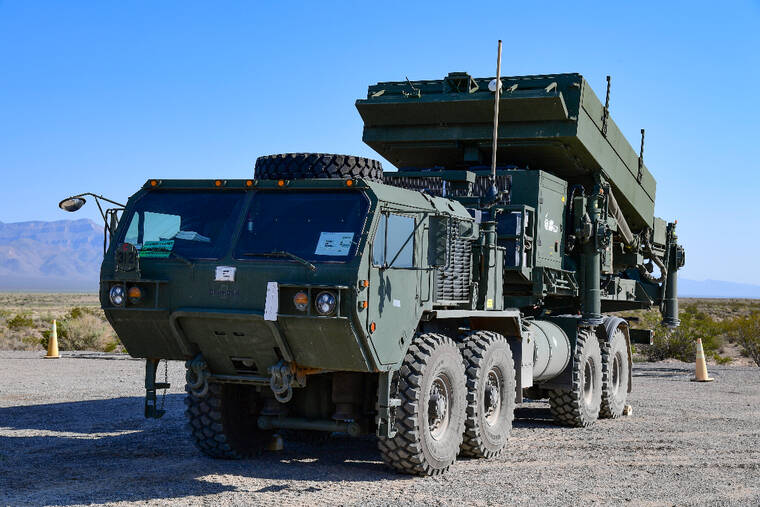The Hawaii-based 94th Army Air and Missile Defense Command is overseeing what it’s calling a “temporary” and “experimental” deployment of one of the Army’s Iron Dome Defense Systems to Andersen Air Force Base on Guam for operational testing.
“The 2019 National Defense Authorization Act required the deployment of the Iron Dome system to “an operational theater no later than the end of 2021,” the 94th, headquartered “at Hickam Field, said in a release.
Soldiers and equipment from the 2nd Battalion, 43rd Air Defense Artillery Regiment from Fort Bliss, Texas, are deploying “in order to fulfill those NDAA requirements, test the capabilities of the system, and further train and refine the deployment capabilities of air defenders,” according to the release.
The Army said “there is currently no plan to conduct a live fire of the system while it is on Guam” during the deployment it’s calling “Operation Iron Island.” The U.S. territory has a Terminal High Altitude Area Defense, or THAAD, system. But to potentially counter rapidly advancing Chinese missiles, the Pentagon is seeking robust 360-degree integrated air and missile defense capability that likely will come from a combination of systems.
The ability to integrate the two systems is “what we’re testing,” said Capt. Nicholas Chopp, a spokesman for the 94th command. The Army will be “figuring out … what systems can we integrate out here (and) what doesn’t integrate. That will be ongoing once the equipment gets out there.”
Defense contractor Lockheed Martin said THAAD defends against short- to
intermediate-range ballistic missiles.
In late August the Army, in conjunction with the Israeli Missile Defense Organization, said it “took a critical step toward fielding” the first of two Iron Dome Defense System-
Army batteries with a successful live-fire test.
The Army systems can defend against subsonic cruise missiles, unmanned aircraft systems and rockets, artillery and mortar threats, the service said.
In August 2019 the United States and Israel signed an agreement for the procurement of two batteries to defend deployed U.S. forces against aerial threats. Those systems were delivered in 2020.
The 3rd Battalion, 43rd Air Defense Artillery was the first unit to undergo new equipment training and execute live-fire tests with the mainly cruise missile defense system. The unit “successfully engaged eight cruise missile surrogate targets as part of a coordinated performance test and live fire event,” the Army said.
The Army said it plans to field both Iron Dome batteries “as an interim cruise missile defense solution, while continuing to acquire” an “enduring” system.
Raytheon Missiles &Defense partnered with Israeli-
based Rafael Advanced Defense Systems to establish an Iron Dome Weapon System production facility in the United States.
Rafael said Iron Dome is “the most deployed missile defense system, with more than 2,000 interceptions and a success rate greater than 90%.”
The Army last month fired from Hawaii for the first time two Patriot missiles — the kind used by
15 nations for defense — knocking out two simulated cruise missile threats at a range of about 20 miles.
The Sept. 1 live-fire test of PAC-2 interceptors from the Pacific Missile Range Facility on Kauai was not intended as a defense-of-
Hawaii scenario, and in fact followed a simulated Patriot launch during an exercise near Okinawa, Japan, and the actual firing of two Patriots in July during exercise Talisman Sabre in Australia.
The series of tests were intended to show the Army’s Patriot is a highly mobile system that can help defend island bases in the Western Pacific, a defense expert said.
The 94th command, which is responsible for all Army air defense assets in the Indo-Pacific region, conducted the Kauai Patriot launch along with an Avenger live fire using a Humvee mounted with short-range Stinger missiles that can be used against cruise missiles, helicopters and drones.

